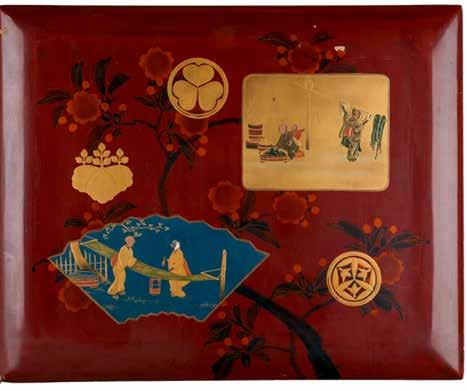The last samurai: Saigō Takamori 西郷 隆盛 (1828–1877)
Jennifer Harris
By the mid-nineteenth century, in the period known as the Bakumatsu (1853–67), the military government (bakufu) established by the Tokugawa shogunate was in decline. The backbone of the bakufu, the samurai class, had become militarily and socially irrelevant. Weakened by domestic food shortages and external foreign threats, in 1858 the shogun was forced to accept the opening of foreign treaty ports, much against the wishes of the populace. Under the slogan of ‘Revere the Emperor, Expel the Barbarians’ (Sonnō Jōi), the notion of restoring the Emperor to power was gaining momentum. After more than 670 years of samurai rule and 260 years of rule by the Tokugawa shogunate, the last shogun, Tokugawa Yoshinobu (1837–1913), relinquished power, on 9 November 1867, in the hope that a political alliance with the Emperor would eventuate.1 Instead, a civil war between daimyo, loyal to the shogun, and ‘outside’ lords (tōzama), loyal to the Emperor, began with an attack on the Emperor’s centre of power in Kyoto. The Boshin war (27 January 1868 – 27 June 1869) involved numerous skirmishes and battles, the most decisive being the Battle of Ueno, in the capital of Edo, on 15 May 1868.
64
fig. 1, detail: Utagawa Yoshitora, Japan, active 1840–1880, Illustration of the great battle of Tōdai (todai daisenso no zu), 1874, colour woodblock print (nishiki-e), ink and colour on paper, nine sheets, 35.5 x 137 cm; On loan from David Forrest and Jánis Nedéla, Perth
1 Donald Keene, Emperor of Japan: Meiji and his world 1852–1912, Columbia University Press, New York, 2002, pp. 116, 117.

















